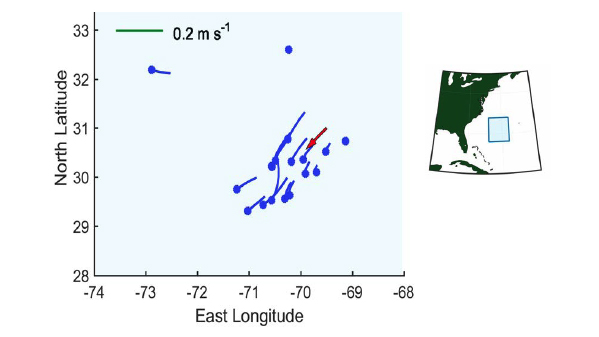Course Description
This resource presents a collection of essays developed from the author’s experience teaching the course Fluid Dynamics of the Atmosphere and Ocean, offered to graduate students entering the MIT/WHOI Joint Program in Oceanography. The collection includes the following three essays:
Essay 1: Lagrangian and …
This resource presents a collection of essays developed from the author’s experience teaching the course Fluid Dynamics of the Atmosphere and Ocean, offered to graduate students entering the MIT/WHOI Joint Program in Oceanography. The collection includes the following three essays:
Essay 1: Lagrangian and Eulerian Representations of Fluid Flow (revised and expanded in 2024)
- Part 1: Kinematics and the Equations of Motion
- Part 2: Advection of Parcels and Fields
Essay 2: Dimensional Analysis of Models and Data Sets: Similarity Solutions and Scaling Analysis
Essay 3: A Coriolis Tutorial (revised and expanded in 2023)
- Part 1: The Coriolis Force, Inertial and Geostrophic Motion
- Part 2: A Rotating Shallow Water Model and Geostrophic Adjustment
- Part 3: Beta Effects and Western Propagation
- Part 4: Wind-Driven Ocean Circulation and the Sverdrup Relation
- Part 5: On the Seasonally-Varying Circulation of the Arabian Sea
The goal of this resource is to help each student master the concepts and mathematical tools that make up the foundation of classical and geophysical fluid dynamics. These essays treat these topics in considerably greater depth than a comprehensive fluids textbook can afford, and they are accompanied by data files (MATLAB® and Fortran) to allow some application and experimentation. They should be suitable for self-study.
Course Info
Learning Resource Types









